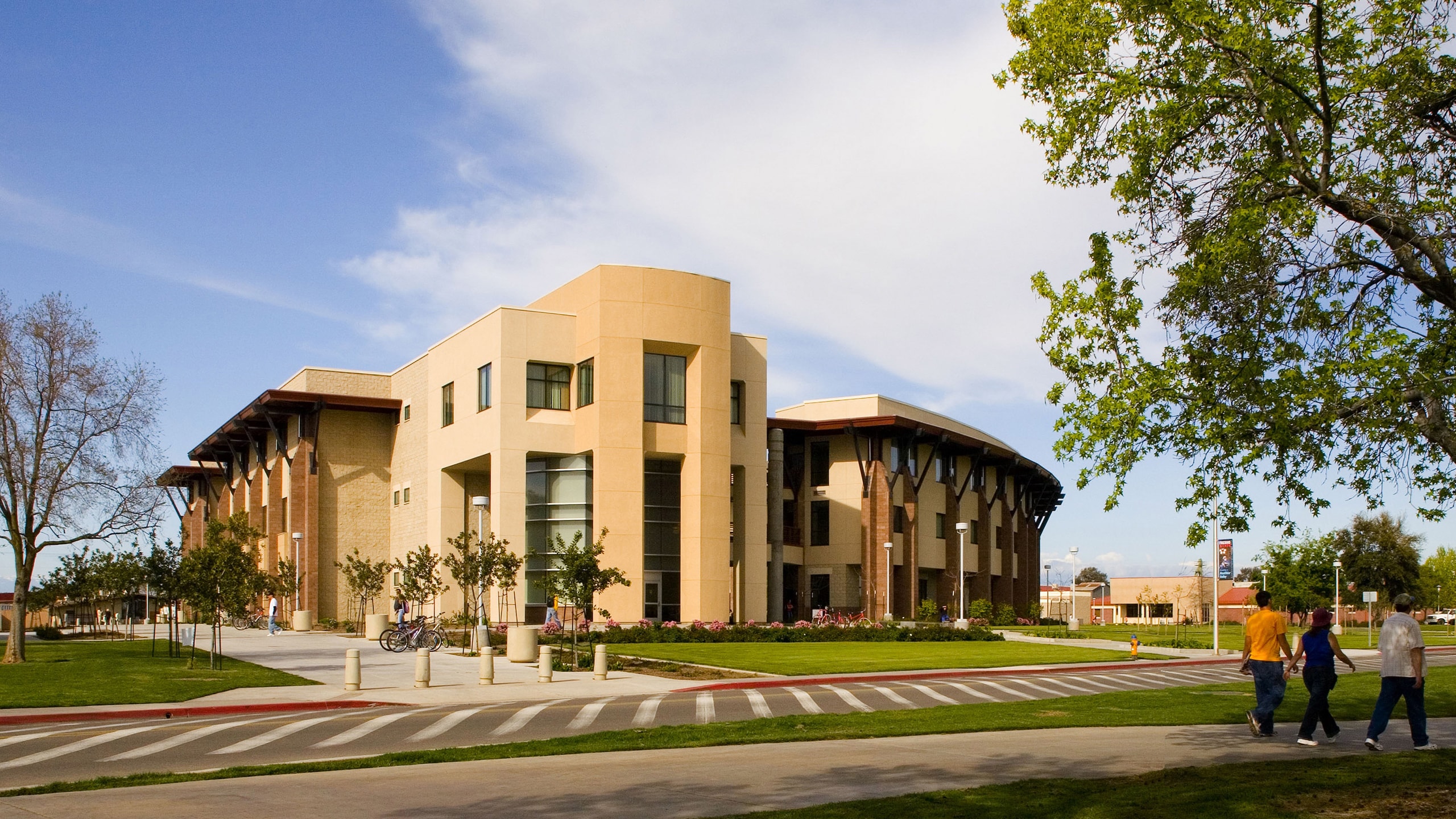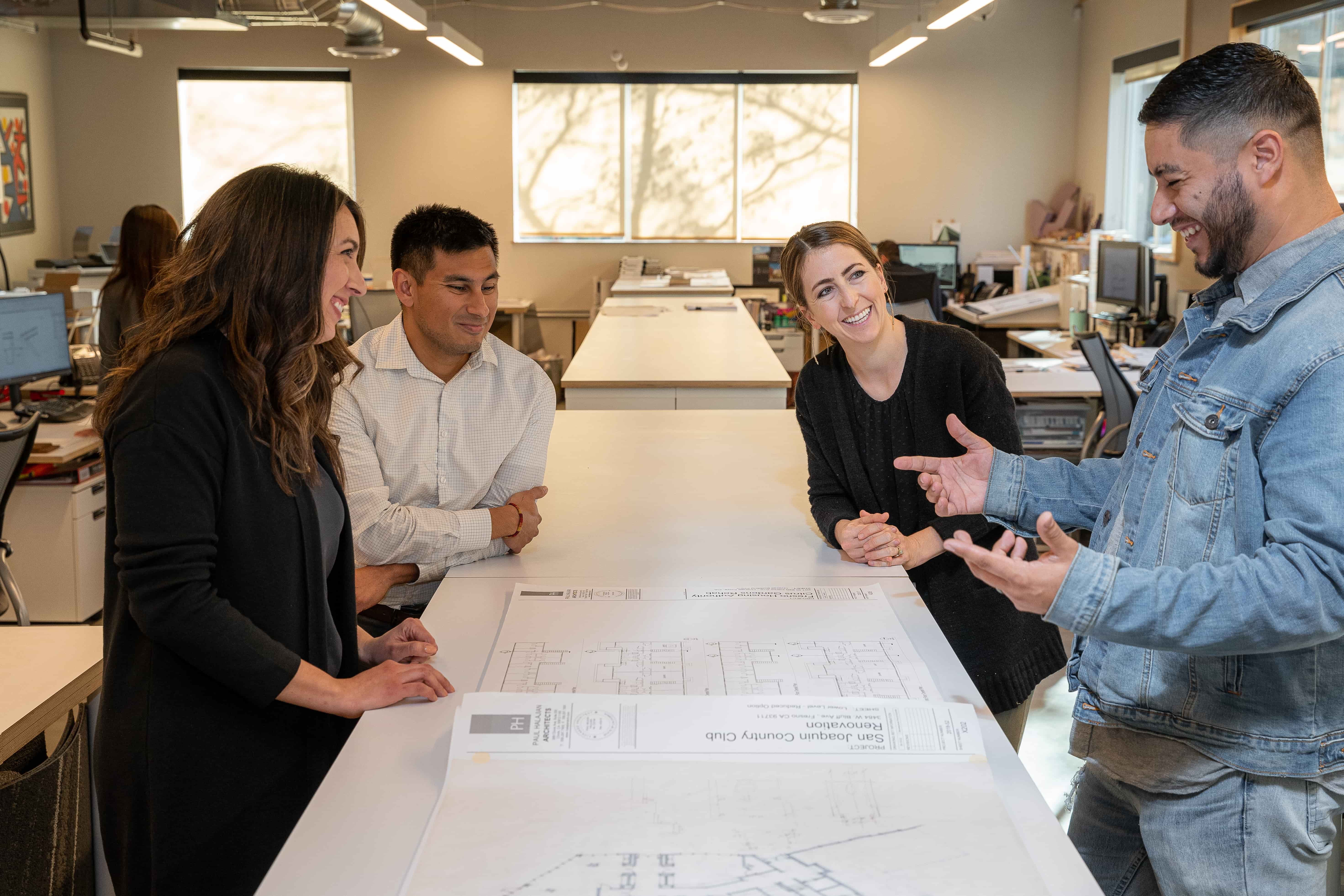Selecting the Best Architecture College For You

Author: Adriana Duarte-Dionicio
Embarking on a career in architecture can be an exciting journey filled with endless possibilities. If you’re ready to take the first step and apply to schools, you may find yourself faced with numerous questions and considerations. What exactly is NAAB, and what does it mean for a school to be accredited? Which degree is necessary to obtain a license? And what exactly is a studio in the context of architecture? These are just a few of the many factors you’ll want to explore as you delve into your research, aiming to discover the best architecture colleges that align with your aspirations and suit your individual needs.

It’s important to recognize that everyone’s path in the field of architecture is unique. There’s no one-size-fits-all approach. Perhaps you’ve recently graduated from high school and are eager to dive straight into a comprehensive five-year architecture program. Or maybe you prefer to gain some practical experience and a deeper understanding of architecture before fully committing, instead opting to start at a community college. The key objective throughout this process is to select the architecture school and education that aligns best with your goals, providing you with the knowledge and skills you aspire to acquire.
In our office, we have a diverse team of architects who pursued different educational paths to reach where they are today. This diversity of experiences has enriched our collective knowledge base, enabling us to approach projects from various perspectives. As you embark on your search, it’s crucial to remember that your investment in any architecture program will determine what you ultimately gain from it. Your dedication and commitment will shape your educational journey and pave the way for your future success in the field.
How Do Architecture Programs Work?
An architecture program has a primary objective: to equip you with a strong design foundation and challenge your ability to think creatively and critically about architectural design. By doing so, it prepares you for a career as a licensed architect or a similar profession in the design field.
However, the program goes beyond the fundamentals of design. It also aims to provide you with an understanding of the practical aspects of architecture, including the business side of the profession and the ways in which architecture adds value to people’s daily lives. Read more on how to become an architect or designer in California.
As architects, we are lifelong learners, constantly seeking to stay updated with the latest technological advancements, materials, and building code regulations, and understanding how these elements apply to the diverse range of projects we work on. During your time in school, you will delve into various subjects such as architectural history, sustainability, structures, technology, and psychology. Essentially, you will gain knowledge about multiple facets that should be considered when developing a design solution.

There are several educational paths that can lead to a career in architecture or fulfill the educational requirements for licensure. The most common route is to pursue a Bachelor of Architecture (B.Arch) or a Master of Architecture (M.Arch) in a program accredited by the National Architectural Accrediting Board (NAAB). This can be done by entering the program as a freshman directly from high school, transferring from a community college after completing two years of study, or pursuing a two-year post-graduate architecture program after obtaining a bachelor’s degree in a related field.
The education you receive in an architecture program differs from traditional college coursework. It fosters creative thinking and exploration in a “studio” setting. The studio can be likened to a laboratory where you are free to explore your ideas through various mediums such as drawing, model-making, material testing, and computer modeling. Collaboration with your peers is highly encouraged, creating an environment of shared knowledge and inspiration. In the studio, anything goes, and it serves as a space where you can develop and refine your design skills with the guidance of experienced professionals.
How Do You Know if an Architecture School is Legitimate or Accredited?
The National Architectural Accrediting Board (NAAB) plays a crucial role in regulating and ensuring that architecture programs provide the necessary education for individuals pursuing a career in architecture. When a school is accredited by NAAB, it signifies that the institution has undergone evaluation and meets specific educational standards set by NAAB. These accredited schools typically offer either a Bachelor of Architecture (B.Arch) or a Master of Architecture (M.Arch) degree, which are recognized qualifications in the field.
For more information about accredited programs, you can visit the NAAB website. This resource can help you explore the various options available nationwide. In California alone, there are 18 accredited programs to choose from, and every state has at least one accredited program, ensuring accessibility across the country.
While attending an accredited program may be the most direct pathway to begin the licensure process and become a licensed architect, it’s not the only route. There are alternative paths and options available to individuals interested in pursuing a career in architecture. It’s essential to consider your personal circumstances and goals when deciding which educational path is best suited for you.

What Are the Major Differences Between Architecture Colleges?
One significant distinction among architecture programs lies in their approach, whether they lean towards a more theoretical or practical orientation. Some programs emphasize teaching different design theories and exploring architecture from an artistic perspective. These programs aim to develop your conceptual thinking and expand your creative abilities. On the other hand, there are programs that prioritize hands-on experience and provide a more practical approach focused on functionality. These programs emphasize equipping students with the skills and knowledge needed to address real-world architectural challenges.
Additionally, architecture programs vary in their emphasis on research and experimentation. Some programs place a strong emphasis on research, encouraging students to explore innovative ideas and push the boundaries of architectural knowledge.
These programs may provide opportunities to engage in research projects and delve into theoretical investigations. On the other hand, other programs prioritize practical application and provide opportunities for students to test their ideas in material labs. These labs offer a hands-on environment where students can experiment with different materials, construction techniques, and building systems.
Architecture programs may offer various concentrations or specialized tracks based on the school’s curriculum. These concentrations allow students to focus their studies on specific areas of interest within the field of architecture. For example, a program might offer a concentration in sustainability, where students can delve into environmentally conscious design practices and explore sustainable building technologies. Alternatively, a program may encourage students to push the boundaries of structural design and explore innovative structural systems and construction methods.
When considering architecture programs, it’s important to take into account these different approaches, research opportunities, and specialized concentrations offered by each school. Understanding the program’s educational philosophy and aligning it with your own interests and career goals can help you make an informed decision about which program is the best fit for you.
How To Identify a Good Architecture Program
When choosing an architecture program, here are a few important questions to consider. While much of this information can be discovered through online research, it can also be helpful to reach out to the program and ask if there are any students who would be willing to tell you about their experiences.
- Does the program provide immediate exposure to design through studio courses? Are the instructors practicing architects or more focused on education?
- Are there opportunities to specialize and develop skills in areas such as technology, visual production (3D printing, VR, animation, etc.), sustainability, history, or digital fabrication?
- Does the education offered by the program emphasize research, prototypical studies, and does it contribute to the overall advancement of the industry?
- Are there opportunities for study-abroad or off-campus experiences? Do they offer internships for school credit or arrange visits to real construction sites?
- Does the program provide networking opportunities with alumni and professionals in the field? Do they offer assistance with job placement and career development?
- For community college students transferring into an accredited program, does the community college’s associate’s program provide a direct bridge/pathway into an accredited school? Are the courses transferable and aligned with the requirements of the architecture program?
- Integrated Path to Architectural Licensure (IPAL), a program offered in certain schools, allows students to start gaining experience hours while in school, potentially expediting the path to licensure.
Remember that ultimately, it is the individual, not the school, that determines the outcome of your education. Attending the most prestigious school does not guarantee success; it is your active participation, engagement, and seizing of opportunities that will shape your educational journey. While a school may offer excellent resources, programs, and engagement opportunities, it is up to you to make the most of them.
The Best Colleges for Architecture in California
When it comes to architecture programs, there is a wide array of options available worldwide and there isn’t a definitive “top” or “best” school. While there are annual rankings and certain schools that enjoy more recognition and prestige, it is essential to choose a school that aligns with your personal needs and goals for the program. The ultimate objective of an architectural education extends beyond specific schools and can open doors to various design-related fields while fostering exceptional problem-solving skills that transcend industries.
In the local Central Valley area, there are several programs that offer an associate’s degree in architecture, many of which have established partnerships facilitating a smooth transfer to an accredited university for a bachelor’s or master’s degree in the field. These programs serve as a solid starting point on your educational journey.

- California State University, Fresno
- Architectural Studies, B.S. program under the Department of Construction Management
- Fresno City College
- Architecture Associates of Science Degree, under the Applied Technology Division, with an agreement with NewSchool of Architecture and Design for third year placement into their accredited Bachelor’s program
- College of the Sequoias, Tulare Campus
- Associate of Science in Architecture (AS) under the Industry and Technology Department, with an agreement with NewSchool of Architecture and Design for 3rd year placement into their accredited Bachelor’s program.
- Bakersfield College
- Architecture/Architectural Drafting Associate of Science Degree, with an agreement with NewSchool of Architecture and Design for 3rd year placement into their accredited Bachelor’s program.
Here are additional schools renowned for their strong architecture programs and their respective areas of expertise:
- Southern California Institute of Architecture (SCI-Arc): produces designers, focuses on design thinking, digital superiority
- Harvard University Graduate School of Design (GSD): theory discourse, explores world problems, fashion/design
- Columbia University: explores big ideas, emphasizes on the technical
- University of California Los Angeles (UCLA): explores big ideas, film
- University of Southern California (USC): practical, pushes design to the extent of what is capable today
- Massachusetts Institute of Technology (MIT): predominantly research-based, combines science, technology, and mathematics
- University of California, Berkeley: theory-based, environmental, a wholistic approach to design
- Architectural Association School of Architecture (AA): produced some of the best architects in the world
Architecture Programs Our Architects Attended
The following is a selection of schools our team members graduated from (in alphabetical order), if you are interested in learning more, check out their websites and feel free to reach out to us for questions on our experiences!
Tips, Advice & Wisdom from Experienced Architects
The architects at our firm have compiled a few helpful tips and advice to consider while evaluating educational programs.
- When exploring architecture programs, it is highly recommended to visit campuses and witness the work of current students. This includes attending presentations, visiting studios to get a sense of the atmosphere, and gaining an understanding of the program’s expectations.
- It is also worth considering if the program offers architecture activities beyond the regular curriculum. For instance, organizations like AIAS (American Institute of Architecture Students) can provide opportunities to participate in national conferences, interact with students from other colleges, and establish valuable networking connections.
- In addition to academic factors, it is important to take into account the cost of attendance, the location of the school (urban versus smaller college town), and the overall college experience. These aspects contribute to a well-rounded educational journey and influence one’s thinking beyond the confines of the curriculum.
- As a general approach, it is encouraged to step out of one’s comfort zone and seek diverse environments. It is recommended, if possible, to leave home and relocate to a different city in order to observe and experience different ways of living and thinking. This opportunity to explore different perspectives can significantly enhance one’s skills as a designer and thinker.

Unique Paths Our Architects Took
Embarking on a 5-year architecture program immediately after graduating from high school might seem like the straightforward route to begin your architectural education. However, it’s essential to recognize that this path may not be accessible or suitable for everyone. The good news is that starting your education at a local community college should not be seen as a setback.
With thorough research, you can identify a community college program that has a partnership with an accredited college. By enrolling in such a program, you can not only gain a solid introduction to architecture but also ensure that the courses you take will seamlessly transfer to your chosen future schools. This strategic approach allows you to enter an accredited program as an upperclassman (in the second or third year) upon transferring, setting you on the path toward your architectural aspirations.
Adrian Lopez
One of our colleagues, Adrian Lopez, successfully took the route of starting his architectural education at a community college, and he said it was a valuable experience. Adrian’s interest in architecture sparked while working in construction-related jobs, and he realized that he wanted to transition from reading plans in the field to designing them.
He began his journey at the College of the Sequoias (CoS), where he found an excellent mentor who helped him leverage the existing partnership between CoS and NewSchool. Through this partnership, Adrian was able to secure direct placement in the third year of the program. He highlights that attending a community college first allows students to mature, gain clarity on their career aspirations, and develop a greater sense of focus, commitment, and adaptability necessary for the demanding lifestyle of an architectural student and future architect.
Andres Diaz
Similarly, Andres Diaz discovered his passion for architecture while taking prerequisites for structural engineering at a community college. After completing community college, he worked as a drafter for a year before transferring to the architecture program at UNLV (University of Nevada, Las Vegas). While pursuing his studies, Andres also worked in the nightlife industry on the Las Vegas Strip to gain firsthand experience in city dynamics and entertainment spaces.
Andres emphasizes that community college is an excellent choice for students who may be uncertain about their career path, assuring them that it’s okay to have doubts. However, he encourages them to make decisions that propel them forward and avoid stagnation because these experiences ultimately guide them toward their future careers.
Learn more about how our firm utilizes our team’s wide variety of experiences and educational backgrounds by following our social media on Facebook, Instagram, and LinkedIn.
